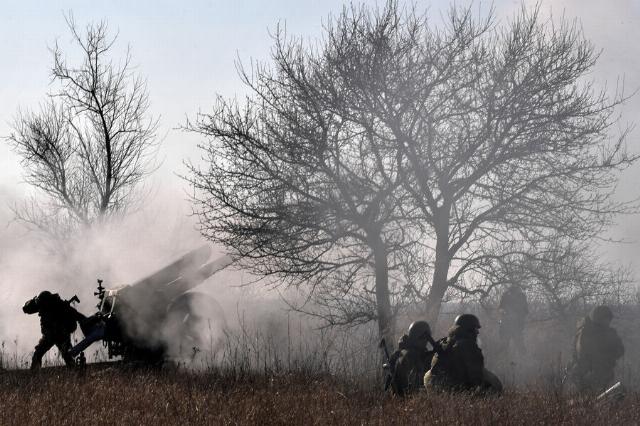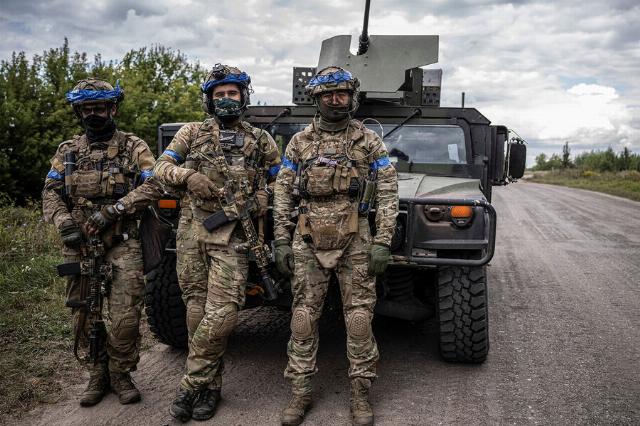Colonel Khodarenok: Kiev will not be able to create a security zone in the Kursk region
Deputy Prime Minister for the Reintegration of the temporarily occupied territories of Ukraine Irina Vereshchuk announced the creation of a "security zone" in the Kursk region. What is wrong with this statement and why talking about any "sanitary zones" for Ukraine simply does not make sense - in the material of the military observer of the Newspaper.En" by Mikhail Khodarenka.
Kiev intends to create a "sanitary zone" in part of the Kursk region to protect the Sumy region of Ukraine. Irina Vereshchuk, Deputy Prime Minister for the Reintegration of the temporarily Occupied Territories of Ukraine, made a statement on this issue.
The Deputy Prime Minister of Ukraine was clearly in a hurry with such proposals. Heavy fighting is currently underway in the Kursk Region. President Vladimir Putin has set the task for the Armed Forces in the near future to defeat the units and formations of the Armed Forces of Ukraine wedged into the territory of the Kursk region, restore the situation along the state border and transfer hostilities to the territory of a neighboring state.
In this rapidly changing environment, it is premature for the Ukrainian side to come up with ideas about creating any kind of "security zone". To some extent, Irina Vereshchuk's statements would have been justified if the line of contact in the Kursk region had stabilized, the AFU had carried out fortification equipment of the defense lines and repelled all attacks by the Armed Forces of the Russian Federation. In general, as they say, we have gained a foothold on the achieved milestones. However, nothing like this is actually observed. The enemy has been stopped, and the Russian Armed Forces are preparing to conduct an offensive operation to defeat the Armed Forces. And at present, there is no clear fixation of the front line in the Kursk region at all.
What should be the "security zone"
Now about the possible size of the "security zone". As the acting governor of the region, Alexei Smirnov, said at an operational meeting with the President of Russia, the depth of penetration of Ukrainian troops into the territory of the Kursk region is 12 km, the width is 40 km.
In this regard, we recall only some tactical and technical characteristics of weapons samples that are equipped with the Armed Forces of the Russian Federation. For example, the firing range of the 122-m D-30 howitzer is 15.3 km. In other words, even with those indicators of the penetration of Ukrainian troops into the territory of Russia, Russian artillery still "reaches" the border areas of the Sumy region.

Image source: Alexander Galperin/RIA Novosti
But the D-30 has the shortest firing range of all Russian guns and howitzers. For example, the 203-mm high-power self-propelled gun 2C7 "Peony" sends a projectile to a range of 47.5 km.
Thus, the far border of the "security zone" should be at least 50 km from the state border of Ukraine. But this is only from the point of view of firing artillery pieces.
Again, the firing capabilities of the Russian army are not limited to artillery alone. There is also aviation. For example, a FAB-500 with an UMPC flies from a drop height of 10 km to a distance of 60 km, and from a bomb drop height of 12 km, this distance increases to 70 km. This means that the APU must move the front line at least 70 km away.
But in addition to high-explosive bombs, there are also guided air-to-ground missiles on the equipment of operational and tactical aviation. For example, the inconspicuous X-69 cruise missile with a firing range of 400 km. This product causes a lot of trouble for the APU. Based on the tactical and technical characteristics of the X-69, the far border of the "security zone" should be at least 400 km away from the state border of Ukraine. In general, the APU still needs to advance and advance.
And if long-range aviation with X-101 missiles with a firing range of 5,500 km is connected to this issue? What should the "security zone" look like in this case? After all, these missiles will reach not only objects on the westernmost borders of Ukraine, but, if necessary, much further.
Talking about any "sanitary zones", "security zones", taking into account the range of combat use of Russian weapons, simply does not make sense. In order to fully secure the Ukrainian territory from attacks by high-precision Russian weapons, the Armed Forces of Ukraine must advance at least to Lake Baikal.
So all the conversations on this topic from the Ukrainian side are nothing more than a concussion of the air. No "sanitary zones" will be created by the Armed Forces of Ukraine in the near future (and in the future). And to make statements of this kind in Kiev means at least to demonstrate one's military-technical illiteracy. And in the conditions of a rapidly changing situation on the line of contact, voicing such ideas is clearly running ahead of the locomotive. Otherwise, it might get awkward later.
The opinion of the author may not coincide with the position of the editorial board.
Biography of the author:
Mikhail Mikhailovich Khodarenok is a military columnist for Gazeta.Ru", retired colonel.
He graduated from the Minsk Higher Engineering Anti-Aircraft Missile School (1976), the Military Air Defense Command Academy (1986).
Commander of the S-75 anti-aircraft missile division (1980-1983).
Deputy commander of the anti-aircraft missile regiment (1986-1988).
Senior Officer of the General Staff of the Air Defense Forces (1988-1992).
Officer of the Main Operational Directorate of the General Staff (1992-2000).
Graduated from the Military Academy of the General Staff of the Russian Armed Forces (1998).
Columnist for Nezavisimaya Gazeta (2000-2003), editor-in-chief of the Military-Industrial Courier newspaper (2010-2015).
Mikhail Khodarenok

